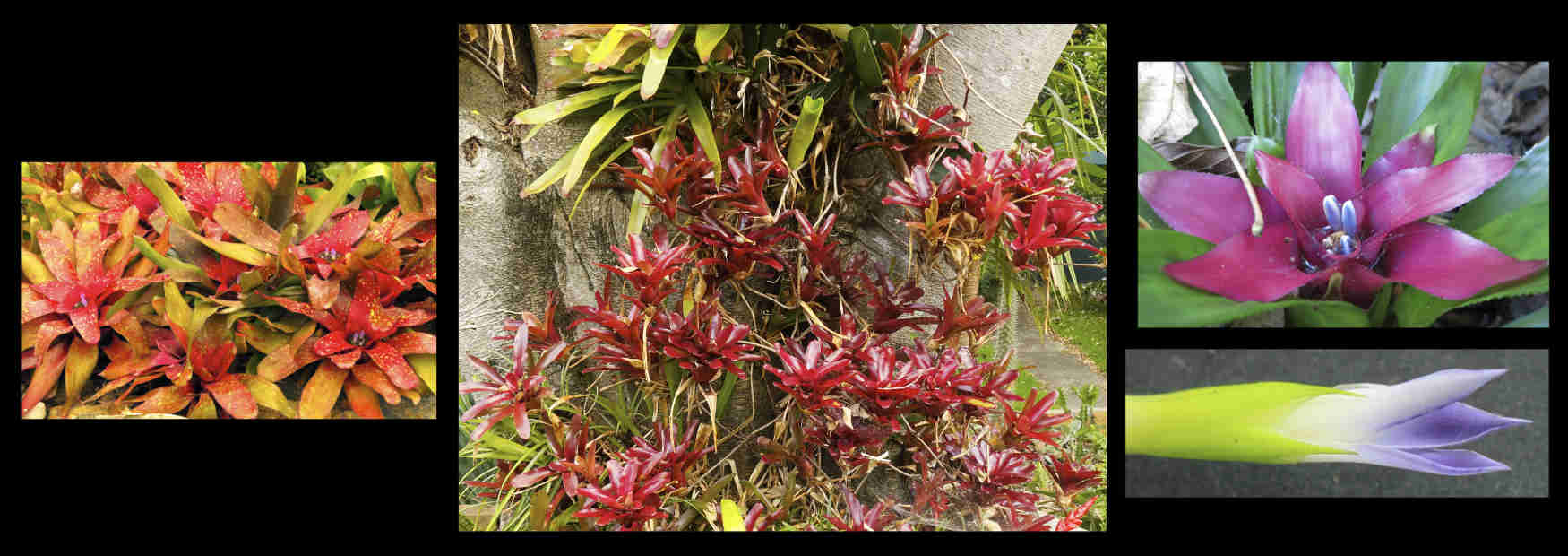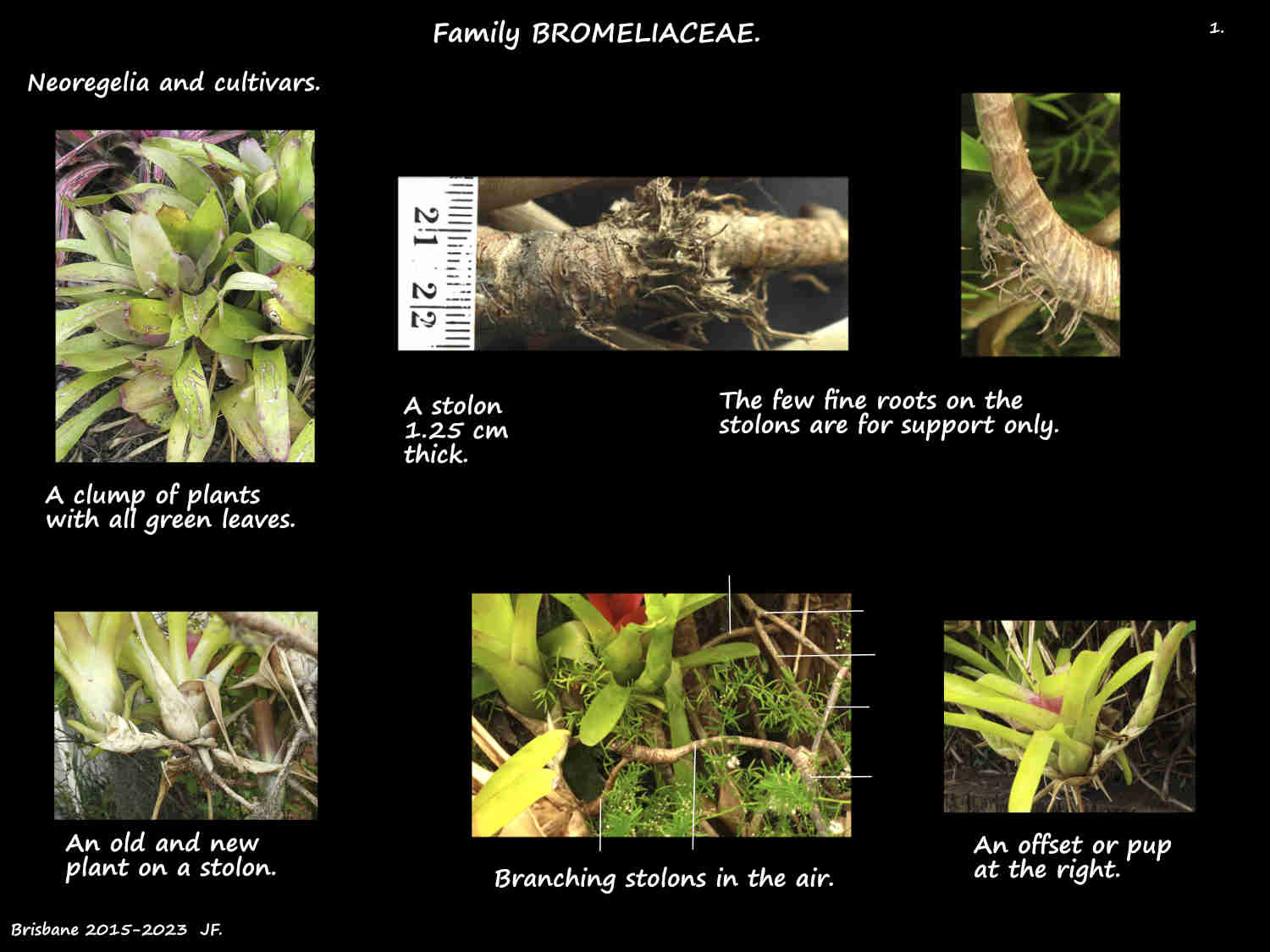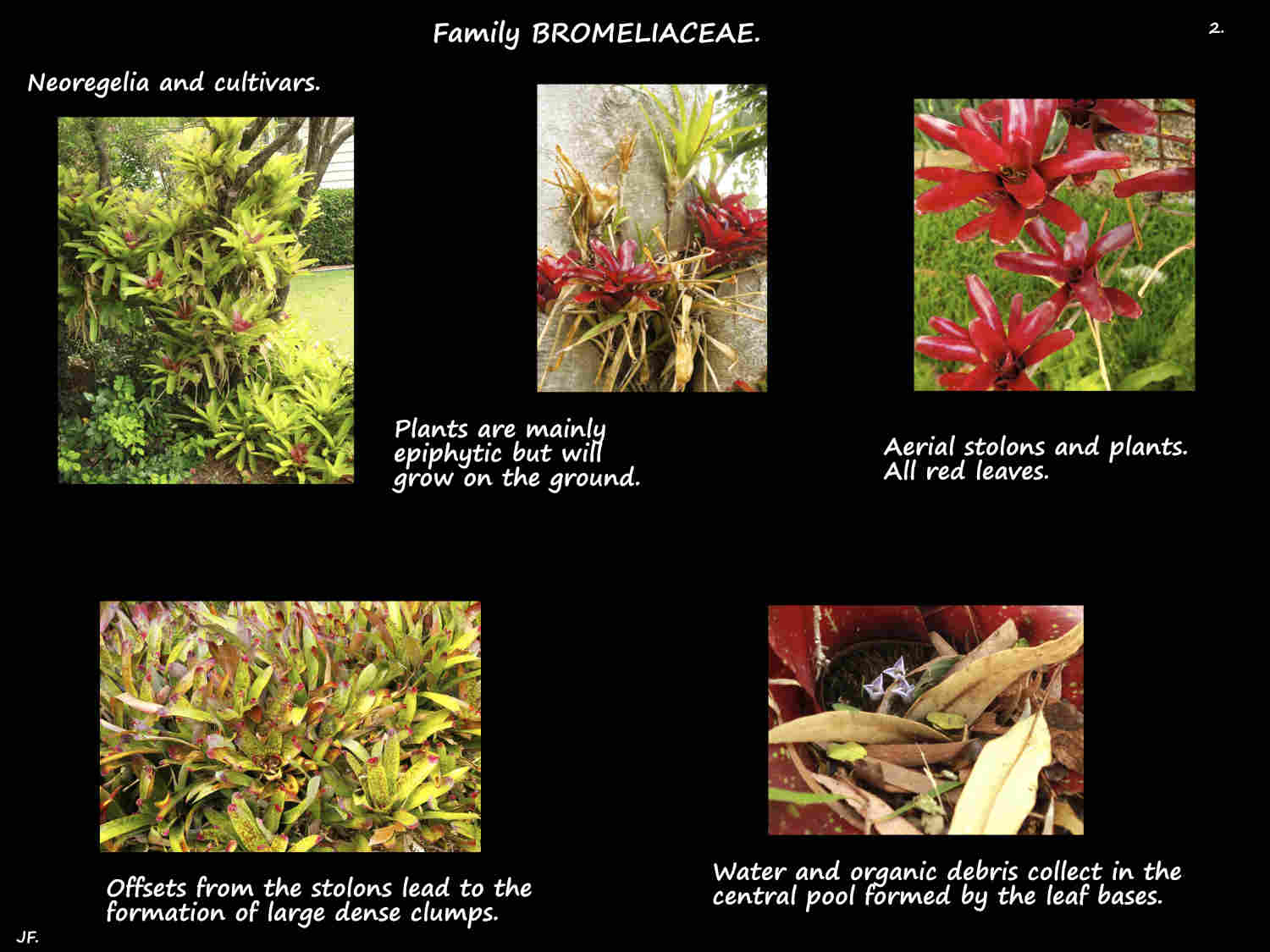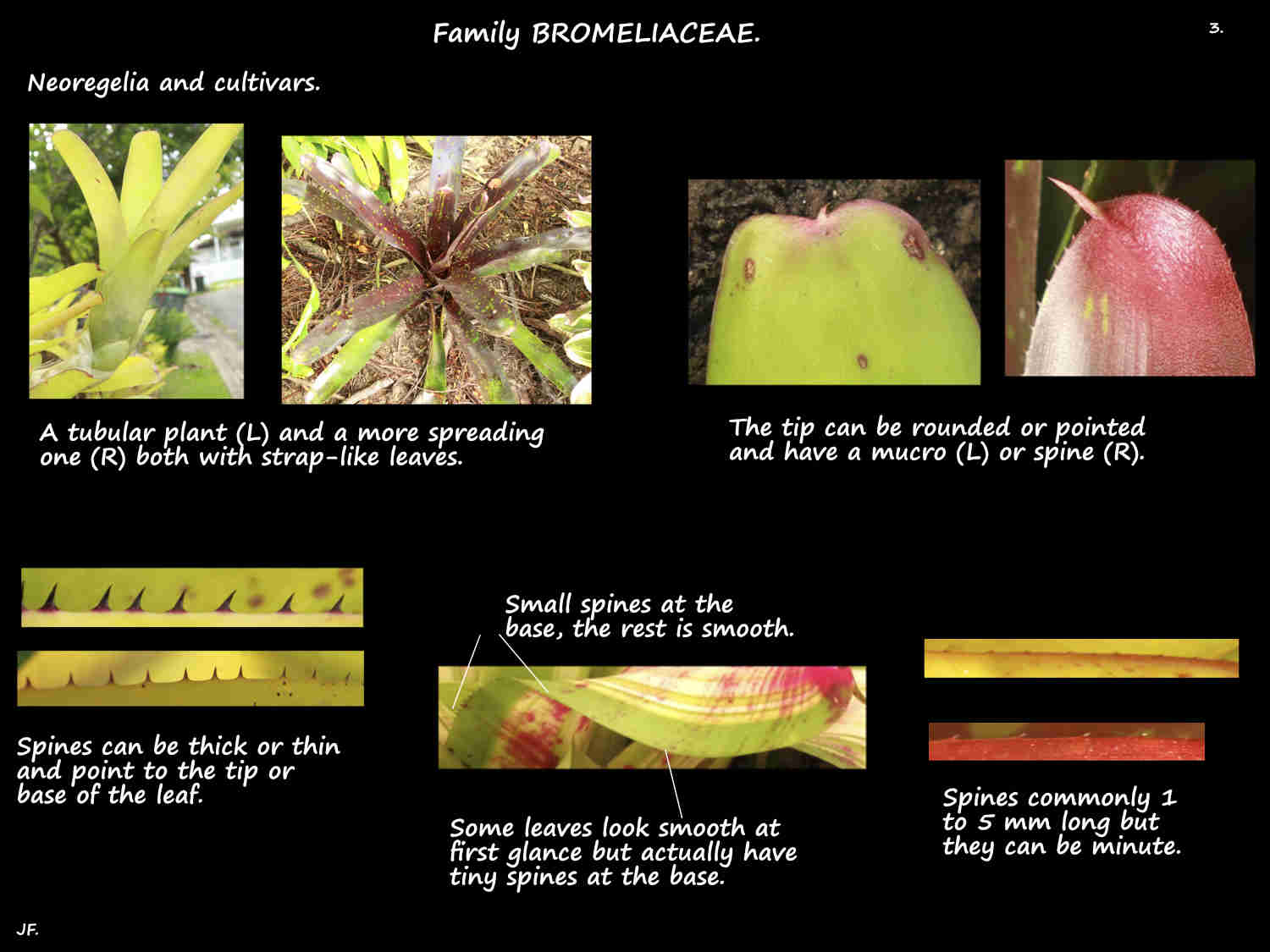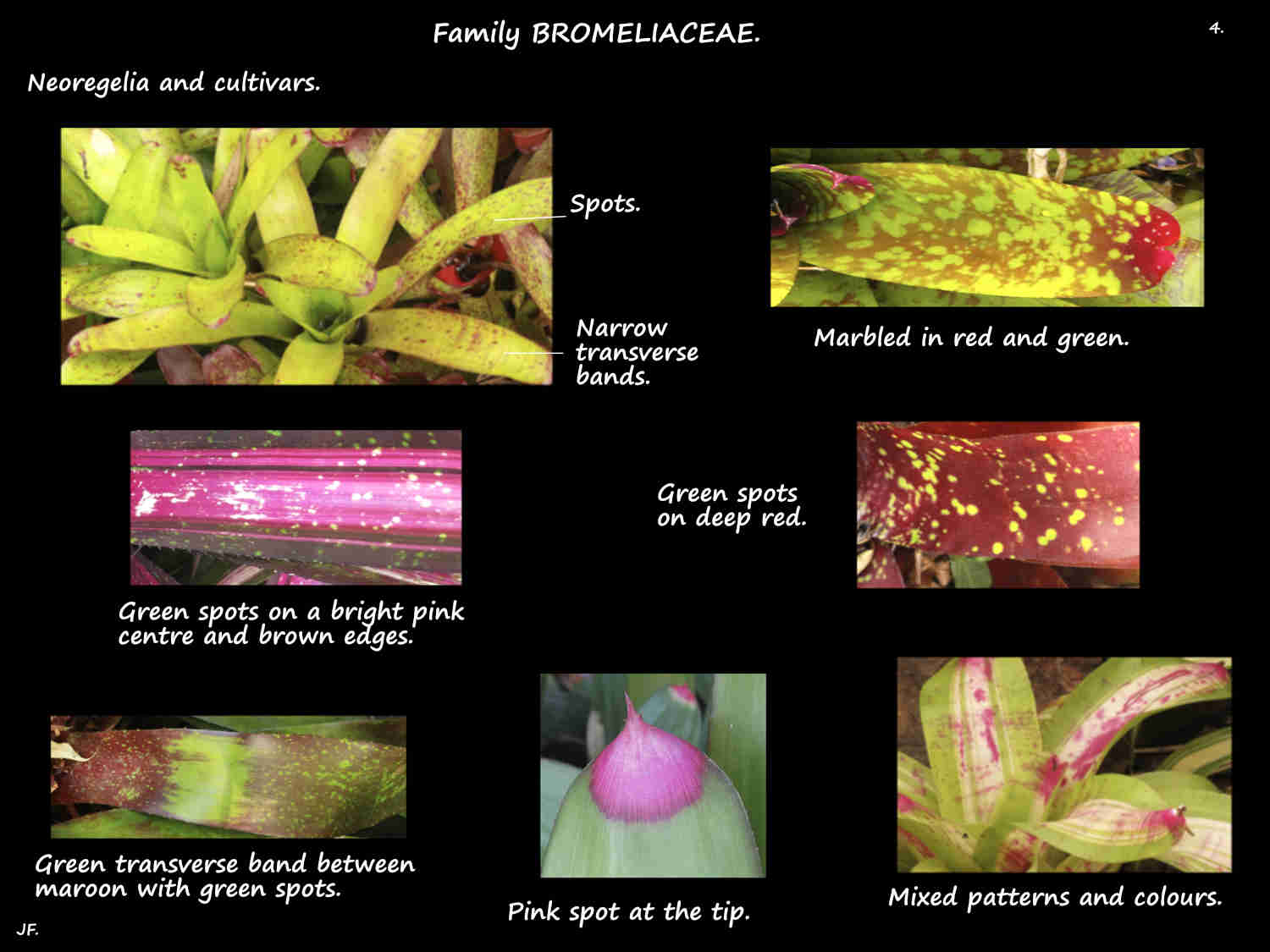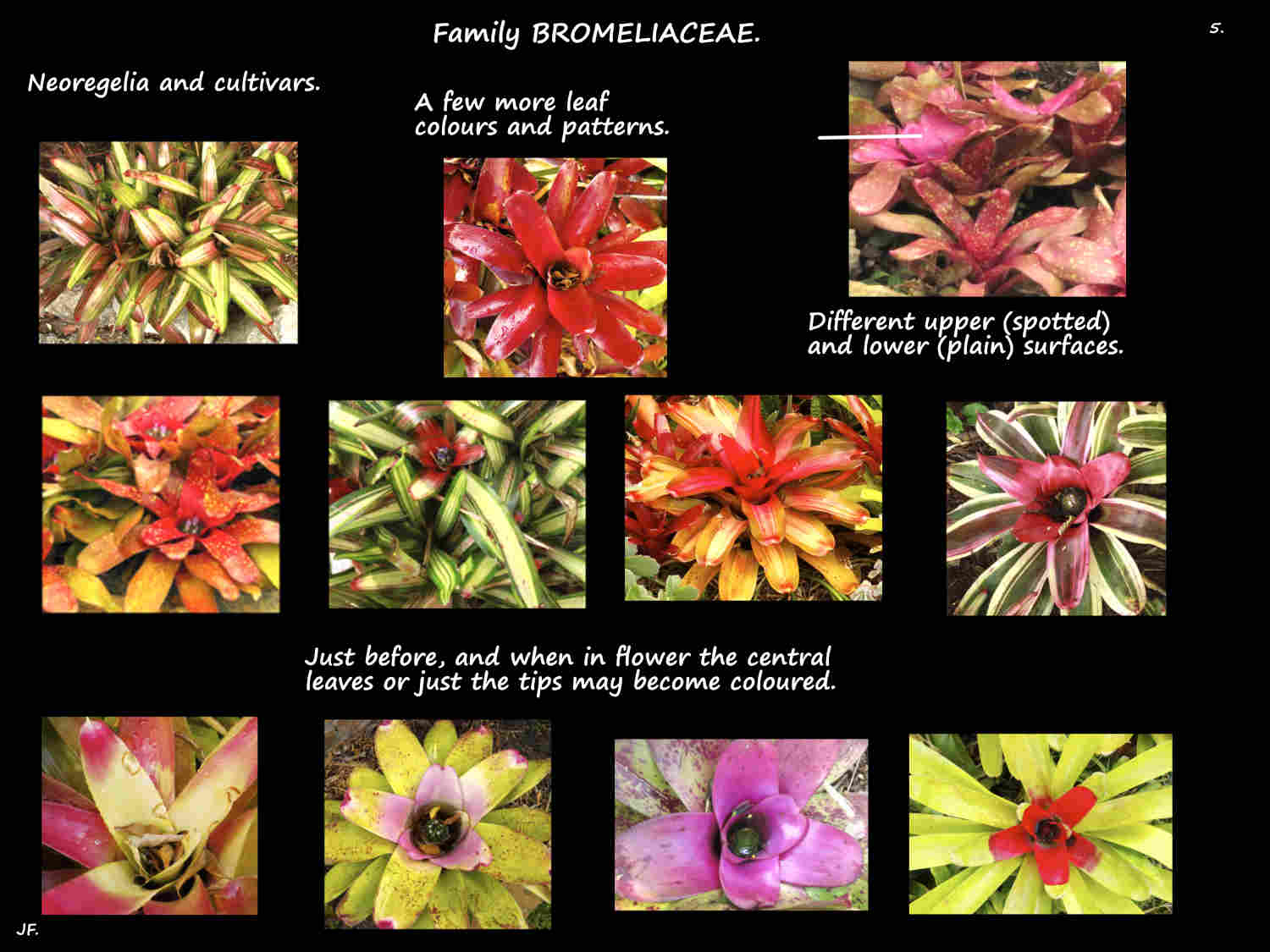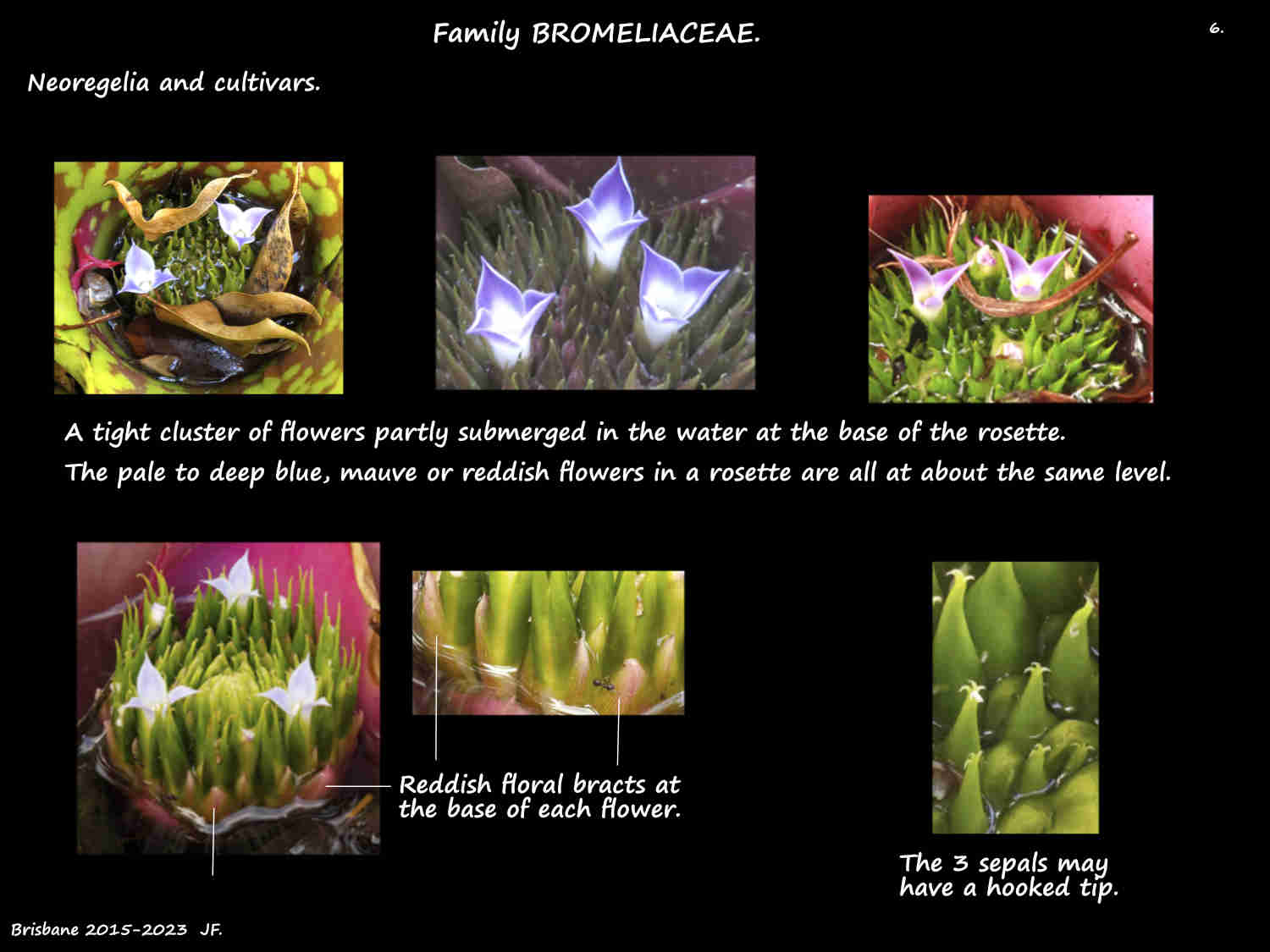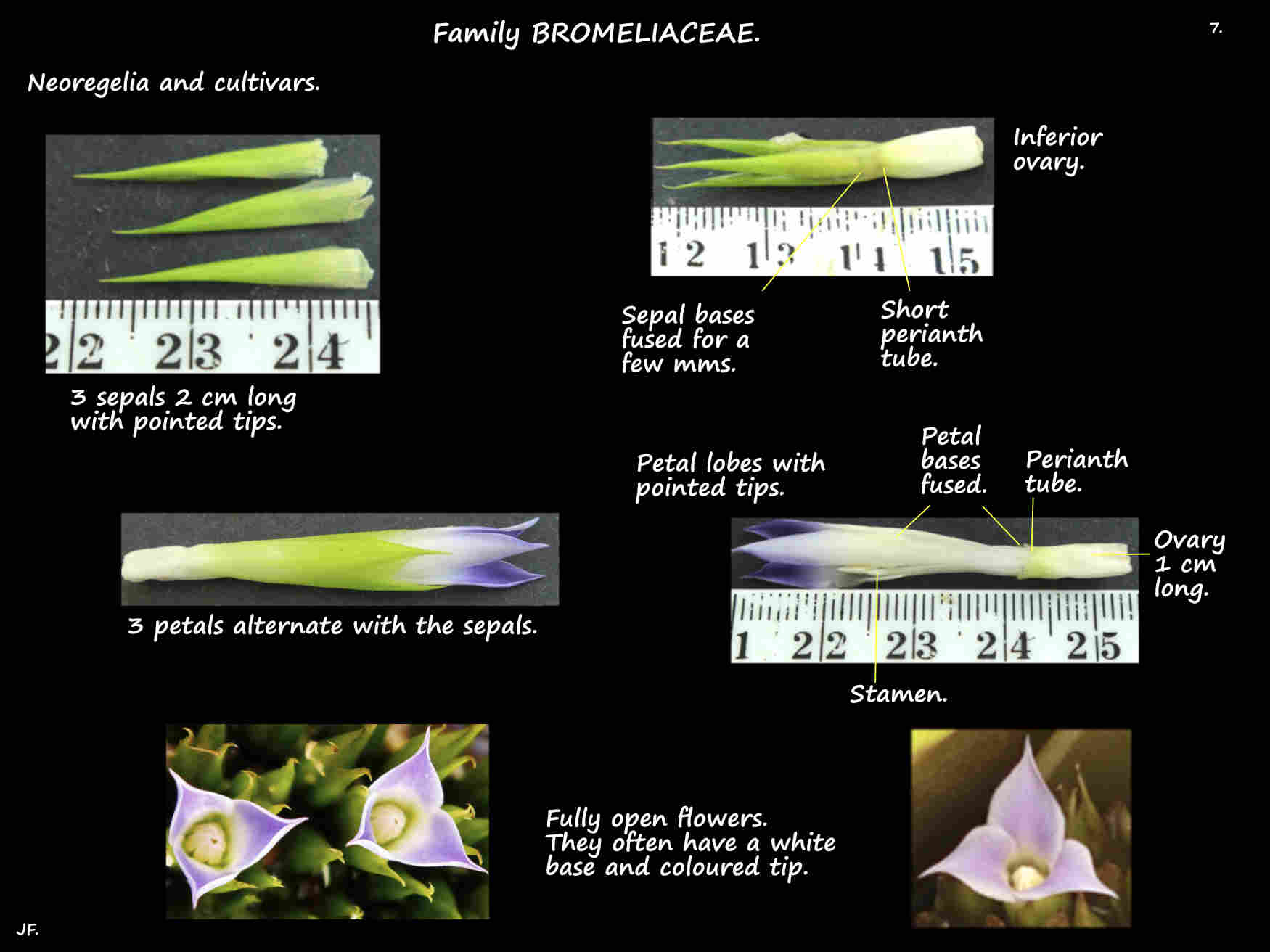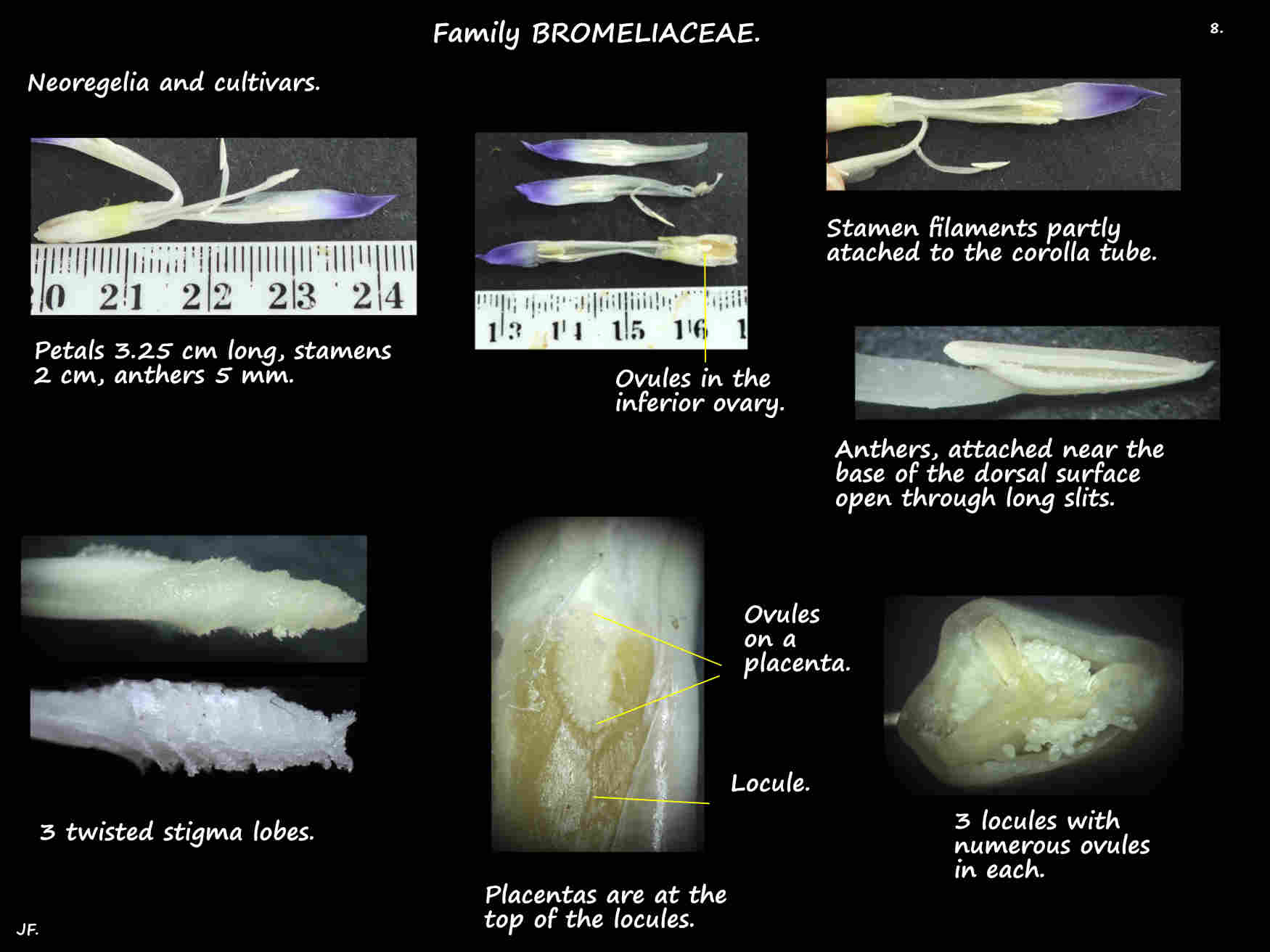Neoregelia & cultivars.
In Family Bromeliaceae > Subfamily Bromelioideae the Blushing Bromeliad is native to the South American tropics.
World Fora Online accepts 116 species.
With their varied and colourful leaves Neoregelia are very common in Brisbane gardens.
Many are epiphytes mainly on trees but sometimes on rocks, some are terrestrial and many epiphytes will grow on the ground.
They are small to medium sized plants with the smallest only 2 or 3 cm high and the largest up to 1 m high and wide.
Roots are for support only with nutrients and water absorbed from the central pool.
New plants, pups or offsets grow from the stolons and can lead to the formation of extensive and dense clumps especially on the ground.
Plants have a spirally arranged rosette of leaves that have a large sheath.
Leaves can be tightly arranged forming a narrow tube or funnel or, more commonly be loosely arranged forming a flatter more spreading plant.
The strap-like leaf blades, commonly around 20 to 40 cm long can be 5 cm to over 1 m long.
Many are 3 to 4 cm wide with some only 0.5 cm and others 10 cm.
The tip can be round or pointed, sometimes with a mucro (short abrupt point).
The edges typically have a few to many spines all around but sometimes just at the base.
The spines can be minute up to 5 mm long and forward or backward pointing.
They can be green, black, red, reddish-brown or dark purple.
The blade can be smooth or have scales, mainly on the lower surface.
Blades can be a single colour or have different colours on each side.
Most have spots, transverse bands, stripes or are multi-coloured (marbled).
Colours include green, purplish or yellowish-green, pink, red, purple, yellow, brown and cream.
There may be a red or green spot at the tip.
The inner leaves, or just their tips usually colour before and during flowering often in red or orange.
The scape is typically very short but in a few species it is up to 5 (11) cm long.
The green, white or coloured scape bracts, about as long as the sepals may have spines, a mucro at the tip and scales.
The inflorescence or flowerhead, from 1 to 8 cm across is mostly simple but may be branched.
Typically the midrib is so short the flowers are sunken in the centre of the leaf rosette.
The few up to 100 flowers are all about the same level and usually covered by the water.
In some species the flowers are held above the leaves.
Flowers are commonly on a stalk only a few mms (4.5 cm) long with a floral bract at the base.
The floral bracts, up to 6 cm long and 0.5 cm wide have a pointed tip sometimes with a spine.
They can be green, white or red and they may have a few scales on the outer or lower surface.
The 3 sepals and petals insert onto the rim of the perianth or epigynous tube which is sometimes very short.
The symmetric or asymmetric sepals are free or joined for up to half their length.
They are equal to or shorter than the floral bracts and up to 1 cm wide.
They can be green, red, purple or white and have a pointed or blunt tip sometimes with a hook.
One or both edges can be thin and membranous and there may be a few scales.
The petals, without basal scales are commonly around 3 to 4 cm long but can be 1 to 10 or 12 cm.
They can be free or joined for half their length and the tips may or may not spread outwards.
As well as white they can be pale to dark blue or violet and rarely red.
Often the base it white and the tip coloured.
The 6 stamens, in 2 whorls are partly fused to the corolla and do not extend past it.
The 1 to 2 cm long inferior ovary, with 3 locules has a style with 3 twisted stigma lobes.
The fruit are berries with numerous seeds.
The plant slowly dies after flowering and is replaced by a pup.
There are over 3000 hybrid cultivars, some with Nidularium species and their appearance may vary greatly depending on growing conditions.
There are also a lot of similar plants in other genera all making it very difficult to identify many of the plants seen.
J.F.
